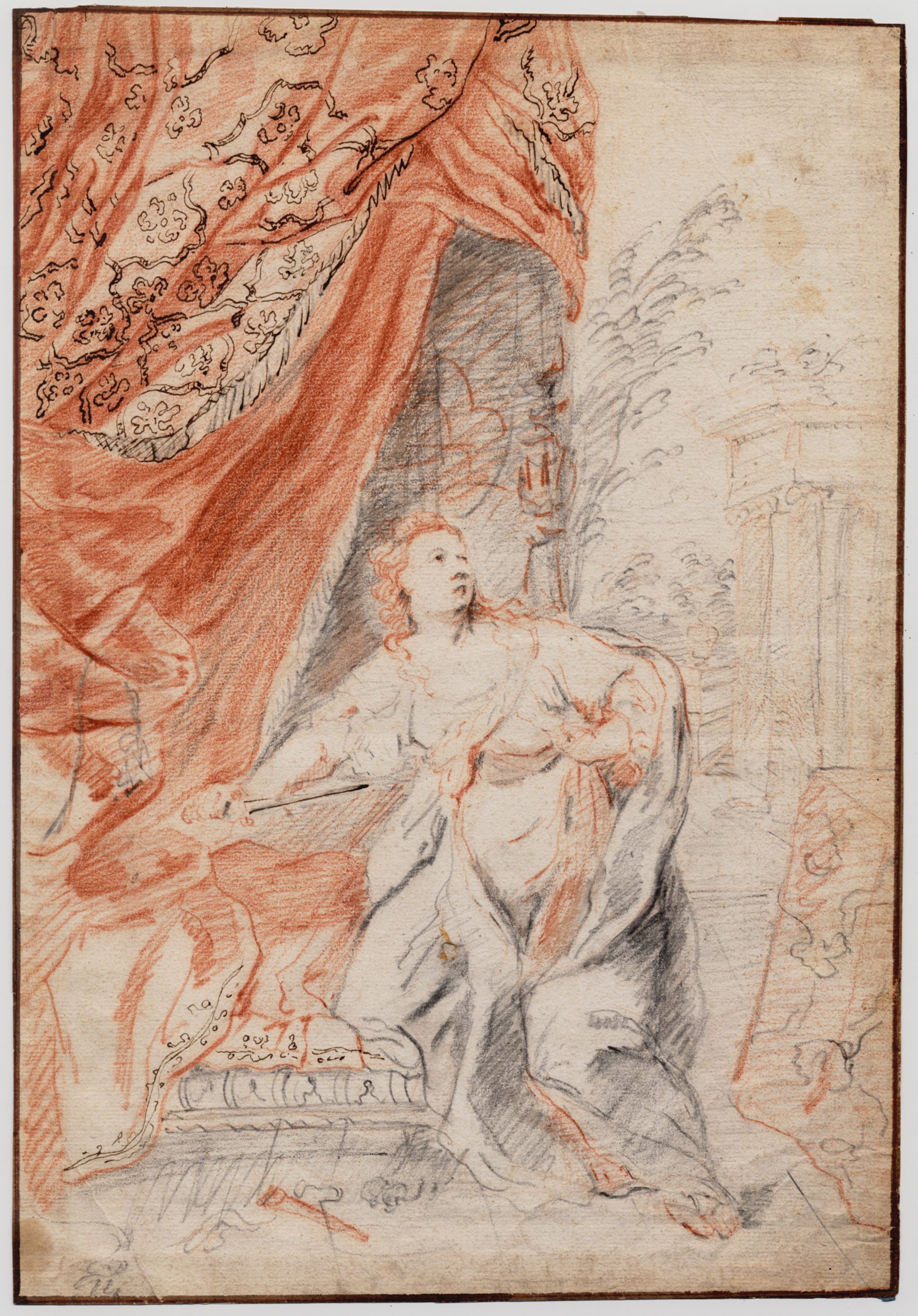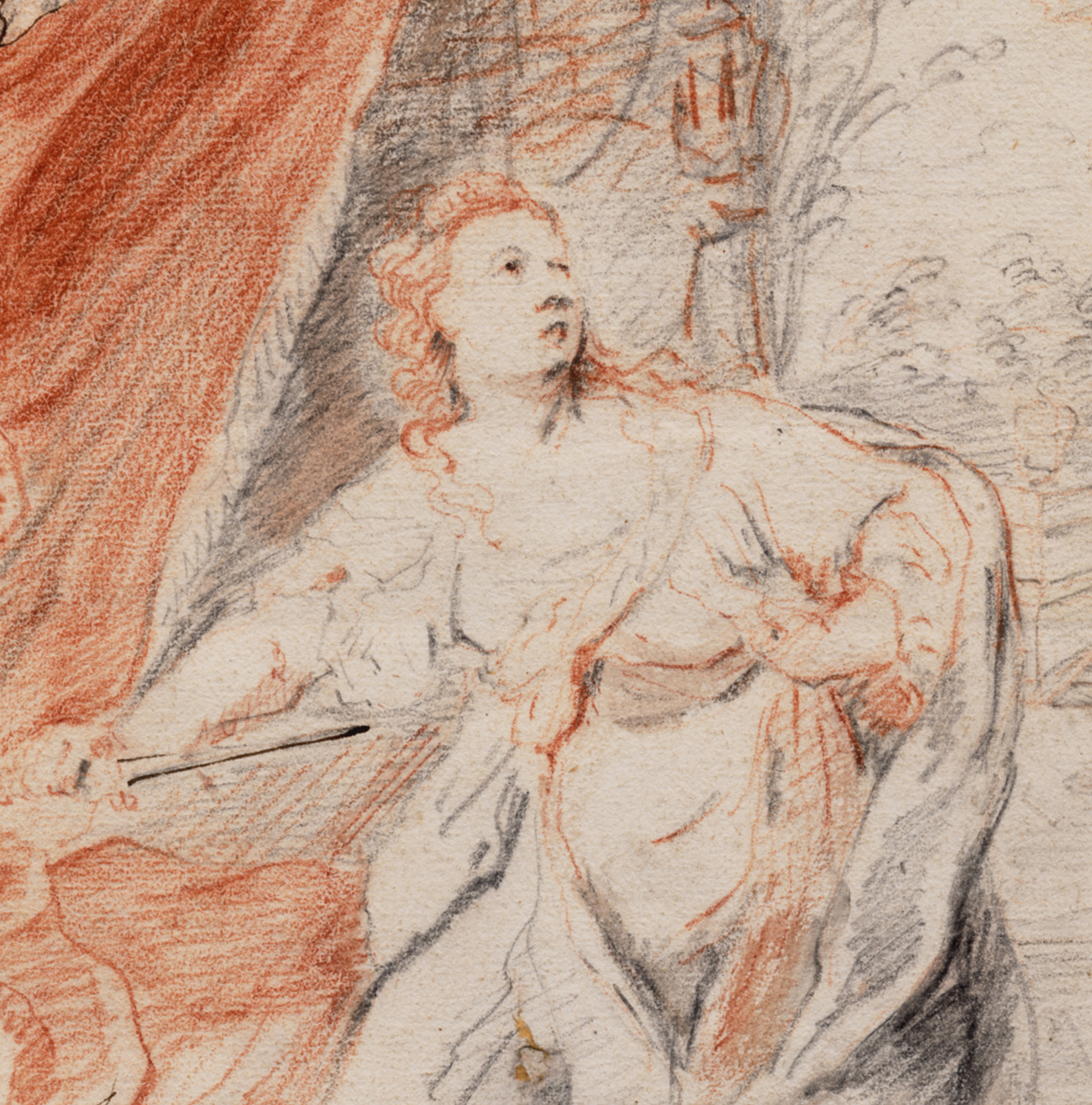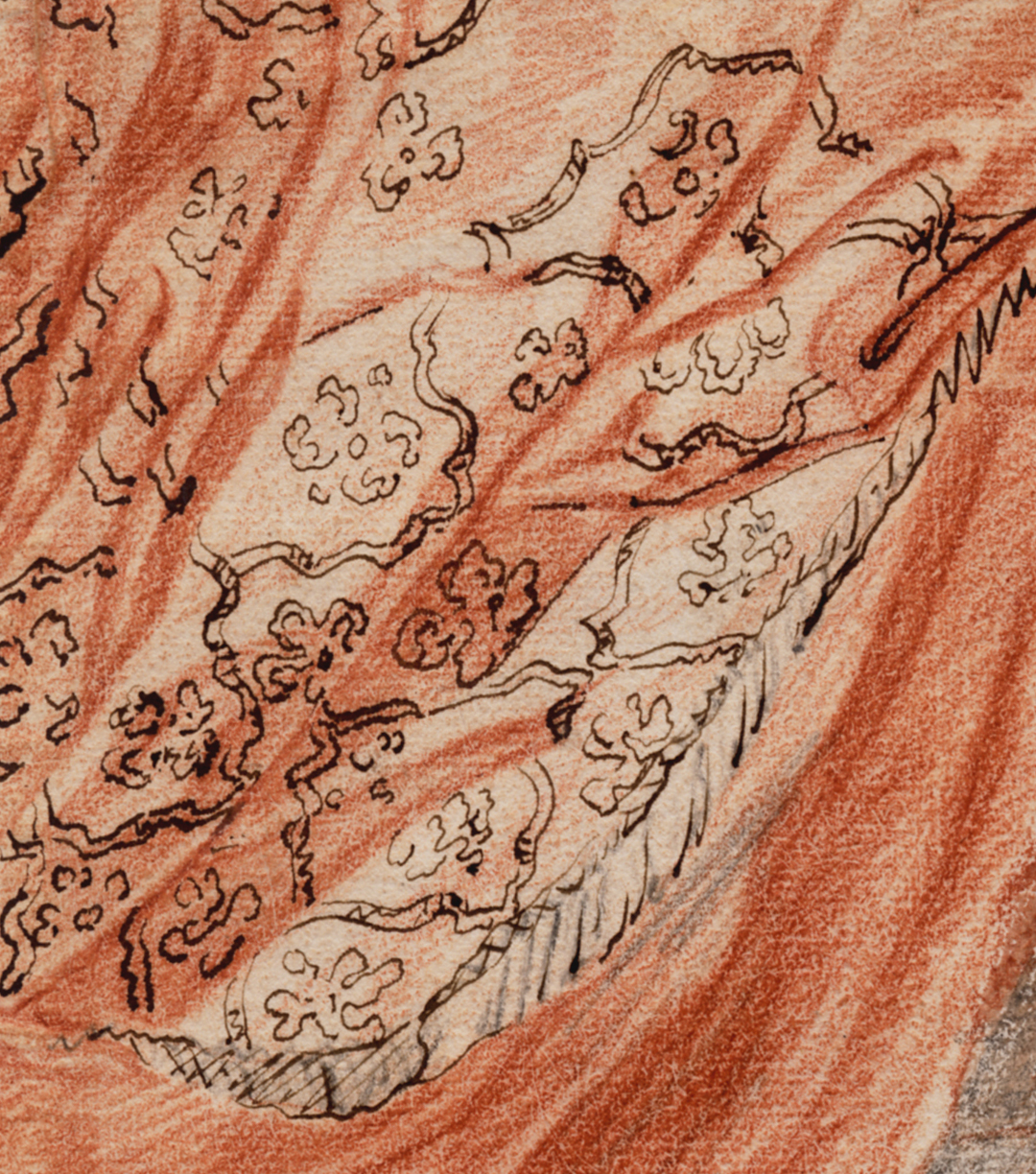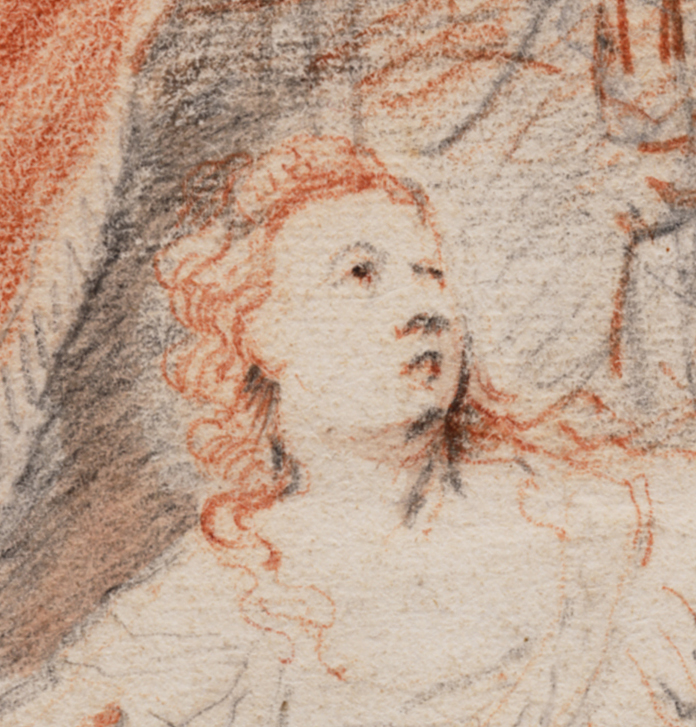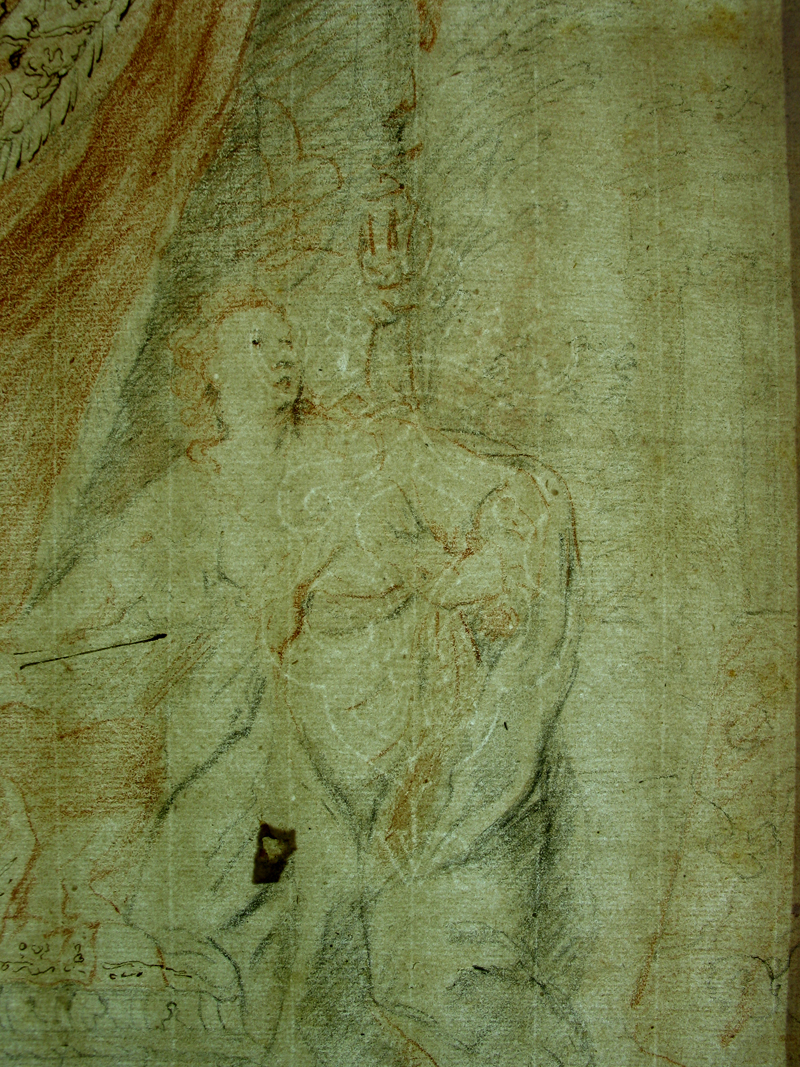CASPAR NETSCHER (Heidelberg 1639 – 1684 The Hague)
Caspar Netscher (Heidelberg 1639 – 1684 The Hague)
The Death of Lucretia
Red and black chalk, pen and brown ink, brown ink framing lines, watermark lily in a crowned shield with letters WR underneath, 321 x 218 mm (12.6 x 8.6 inch)
Provenance
~ D. Breme (his collector's mark on the verso, not in Lugt)
~ Thonon collection (according to an inscription on the verso)
***
This dramatic scene illustrates the suicide of the noble Lucretia, wife of Lucius Tarquinius Collatinus, which followed her rape by Sextus Tarquinius, son of the last king of Rome, Lucius Tarquinius Superbus, whom she had shown great hospitality in her home in her husband’s absence. Lucretia took her own life after the event in order to protect her honour, but news of Tarquin’s brutal act outraged the citizens of Rome, who had had enough of the tyranny of the Roman kings, and consequently the Roman Republic was established.
The author of this superb sheet, Caspar Netscher, was reared in Arnhem, where his first master was Hendrick Coster, and he later studied with Gerard Terborch (1617-1681). In 1659 he set out by sea for Rome but went no farther than Bordeaux, France. By 1662 he had settled in The Hague. Netscher’s earlier genre pieces are closely related to the works of Gabriel Metsu and Gerard Terborch, from whom he acquired great skill in rendering textures. The Lace-Maker in the Wallace Collection (London) is an example of this style. He later became hugely successful for his biblical and mythological subjects and the small and refined portraits displaying great elegance. Netscher’s sons Theodoor (1661–1728) and Constantijn (1668–1723) were among his many pupils and imitators.
Marjorie Wieseman, the leading expert on the artist, has identified around 45 drawings by Netscher, which she characterizes as ‘fluent and sure’.1 They range in function from quick preparatory sketches to elaborately executed modelli and ricordi. A modello is a presentation drawing which an artist could present to a potential client to show what a finished painting would look like, whereas a ricordo was executed after a painting was finished, recording it, either for the artist’s own archive or as a courtesy for the painting’s owner. Although it is often difficult to distinguish between modelli and ricordi, our drawing would seem to fall in one of these two categories. The combination of red and black chalk and especially the incidental use of brown ink defining the sharpness of the dagger’s blade and the patterning of the damask curtain are highly evocative.
No paintings of this subject by Netscher are presently known, although the subject is known from historical references. The sale of Thomas-François-Joseph, comte de Fraula, of 21 July 1738 at Brussels included as lot 71: ‘Netscher. Eene Lucretia houdende eenen poignaert in de handt. Hoogh 11 duym en half, breet 10 duym.’.2 Another reference to a Lucretia, possibly the same picture, is from a sale at Christie’s, London, 26 February 1796, lot 85: ‘Netscher. Lucretia, a beautiful high-finished cabinet picture.’ (to Chippendale for 2.15).
The attribution has been confirmed by Peter Schatborn.
SOLD
1. Marjorie E. Wieseman, ‘Paper trails: drawings in the work of Caspar Netscher and his studio’, in: Volker Manuth and Axel Rüger (eds.), Collected Opinions. Essays on Netherlandish Art in honour of Alfred Bader, London 2004, pp. 248-261, p. 249.
2. ‘Netscher. A Lucretia holding a dagger in her hand. High 11 thumbs and a half, wide 10 thumbs’.
